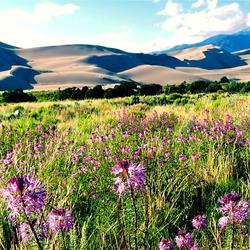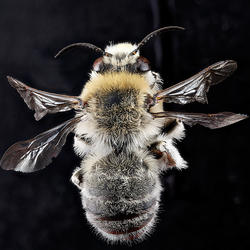FAQs
Following are FAQs related to Northern Prairie Wildlife Research Center science.
What are wetlands? What are wetlands?
Wetlands are transitional areas, sandwiched between permanently flooded deepwater environments and well-drained uplands, where the water table is usually at or near the surface or the land is covered by shallow water. They include mangroves, marshes (salt, brackish, intermediate, and fresh), swamps, forested wetlands, bogs, wet prairies, prairie potholes, and vernal pools. In general terms...
Why are wetlands important? Why are wetlands important?
Wetlands provide habitat for thousands of species of aquatic and terrestrial plants and animals. Wetlands are valuable for flood protection, water quality improvement, shoreline erosion control, natural products, recreation, and aesthetics. Wetlands are among the most productive habitats on earth providing shelter and nursery areas for commercially and recreationally important animals like fish...
What are the differences between endangered, threatened, imperiled, and at-risk species? What are the differences between endangered, threatened, imperiled, and at-risk species?
Under the Endangered Species Act (ESA), plant and animal species may be listed as either endangered or threatened. “Endangered” means a species is in danger of extinction throughout all or a significant portion of its range. “Threatened” means a species is likely to become endangered within the foreseeable future. States have their own ESA-type laws, so species can have different Threatened...
What is the threat from West Nile Virus (WNV) to endangered and threatened bird species? What is the threat from West Nile Virus (WNV) to endangered and threatened bird species?
This is an issue of great concern, as these populations are already struggling to survive in the current environment. If some of these species are more vulnerable to fatal WNV infection, WNV may ultimately lead to their extinction or significantly set back the progress of the recovery programs.
What is carbon sequestration? What is carbon sequestration?
Carbon dioxide is the most commonly produced greenhouse gas. Carbon sequestration is the process of capturing and storing atmospheric carbon dioxide. It is one method of reducing the amount of carbon dioxide in the atmosphere with the goal of reducing global climate change. The USGS is conducting assessments on two major types of carbon sequestration: geologic and biologic.
What’s the difference between geologic and biologic carbon sequestration? What’s the difference between geologic and biologic carbon sequestration?
Geologic carbon sequestration is the process of storing carbon dioxide (CO2) in underground geologic formations. The CO2 is usually pressurized until it becomes a liquid, and then it is injected into porous rock formations in geologic basins. This method of carbon storage is also sometimes a part of enhanced oil recovery, otherwise known as tertiary recovery, because it is typically used later in...
Does the loss of plant diversity affect the health of native bees? Does the loss of plant diversity affect the health of native bees?
Loss of plant diversity is the primary cause of native bee decline. About 30-50% of all native bees are highly specialized, so if the plant they rely on disappears, the bees go away. If the bees disappear, the plant is unable to reproduce and dies out. While some of the plants pollinated by native bees are important food crops, other plants pollinated by native bees are critical for healthy...
How many species of native bees are in the United States? How many species of native bees are in the United States?
There are over 20,000 known bee species in the world, and 4,000 of them are native to the United States. They range from the tiny (2 mm) and solitary Perdita minima, known as the world’s smallest bee, to kumquat-sized species of carpenter bees. Our bees come in as many sizes, shapes, and colors as the flowers they pollinate. There is still much that we don't know about native bees—many are smaller...
Why are pollinating bats, birds, bees, butterflies, and other animals important? Why are pollinating bats, birds, bees, butterflies, and other animals important?
Do you enjoy a hot cup of coffee, a juicy peach, an-apple-a-day, almonds, rich and creamy dates, a handful of plump cashews, or vine-ripened tomatoes? Do you enjoy seeing the native flowers and plants that surround you? If so, you depend on pollinators. Wherever flowering plants flourish, pollinating bees, birds, butterflies, bats and other animals are hard at work, providing vital but often...
Can wild birds spread avian influenza to domestic poultry? Can wild birds spread avian influenza to domestic poultry?
Wild birds can directly or indirectly spread avian influenza to domestic poultry. The indirect route is likely most common due to viral contamination of the farm environment (feed, equipment, boots, clothes). The U.S. Department of Agriculture has found that farm-to-farm movement is also a major route for avian influenza spread, noting that farm biosecurity is critical to reduce the risk of avian...
How can I get bird banding and encounter data, and longevity records, from the Bird Banding Laboratory? How can I get bird banding and encounter data, and longevity records, from the Bird Banding Laboratory?
Banding and encounter data are available for research purposes. Individual banding data records exist electronically starting in 1960. Pre-1960 banding data are available only for birds that have been encountered. Individual encounter data are available from 1913. To make a data request go to the Banding and Encounter Data page. Longevity records shows recorder holders for each bird species and...
How can I stop birds from repeatedly hitting my windows? How can I stop birds from repeatedly hitting my windows?
Bird collisions with glass can occur for several reasons, reflection, transparency or for territory. Glass on our windows and doors can reflect surrounding vegetation or sky giving the illusion that it’s a landscape that birds can use. Transparency can also occur when a bird is able to see true habitat through a set of windows and perceives the space as a fly-through. For example, a transparency...













